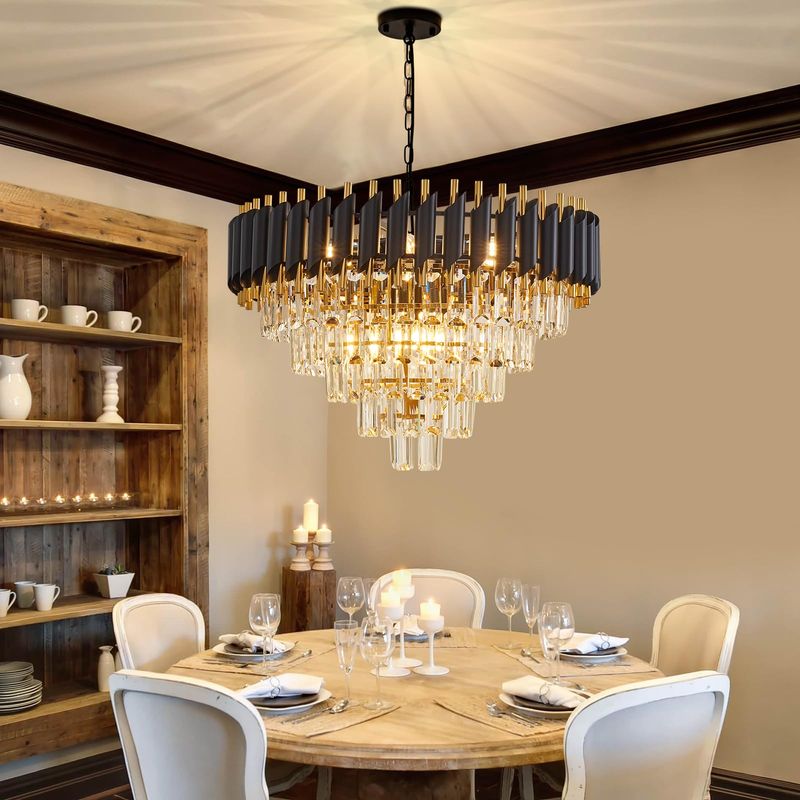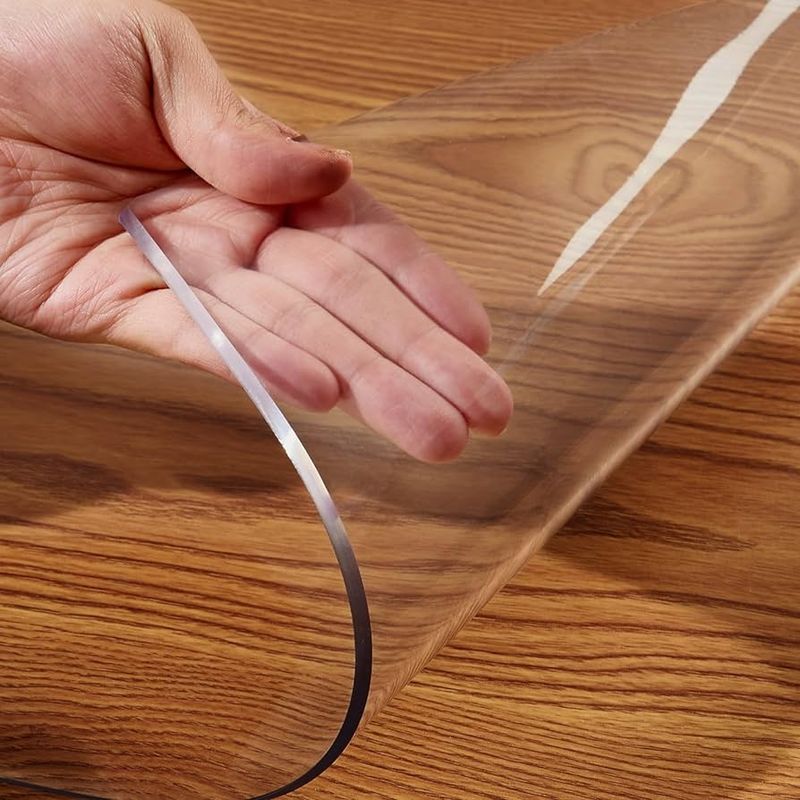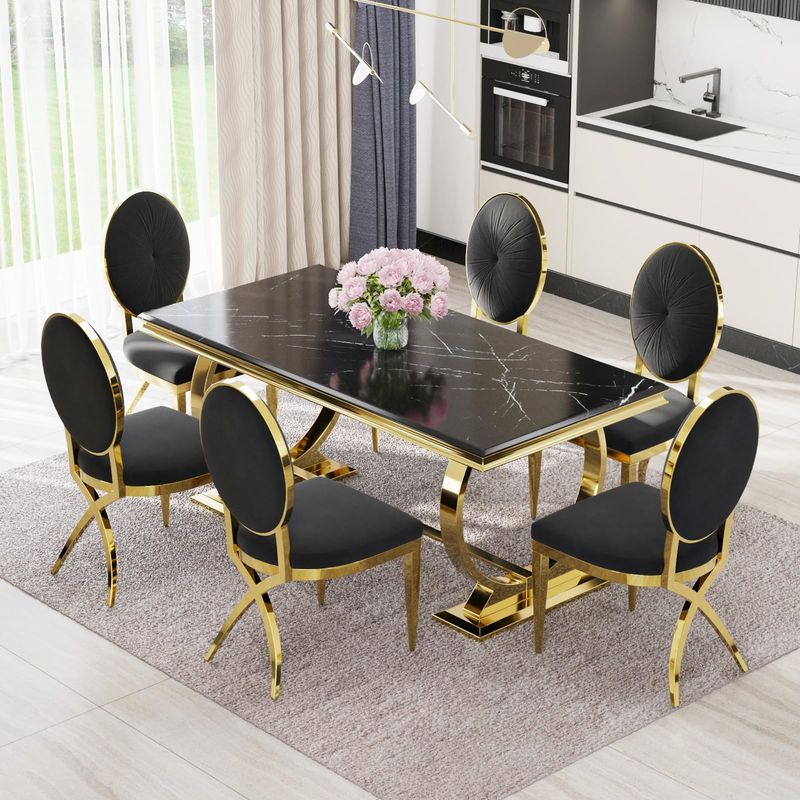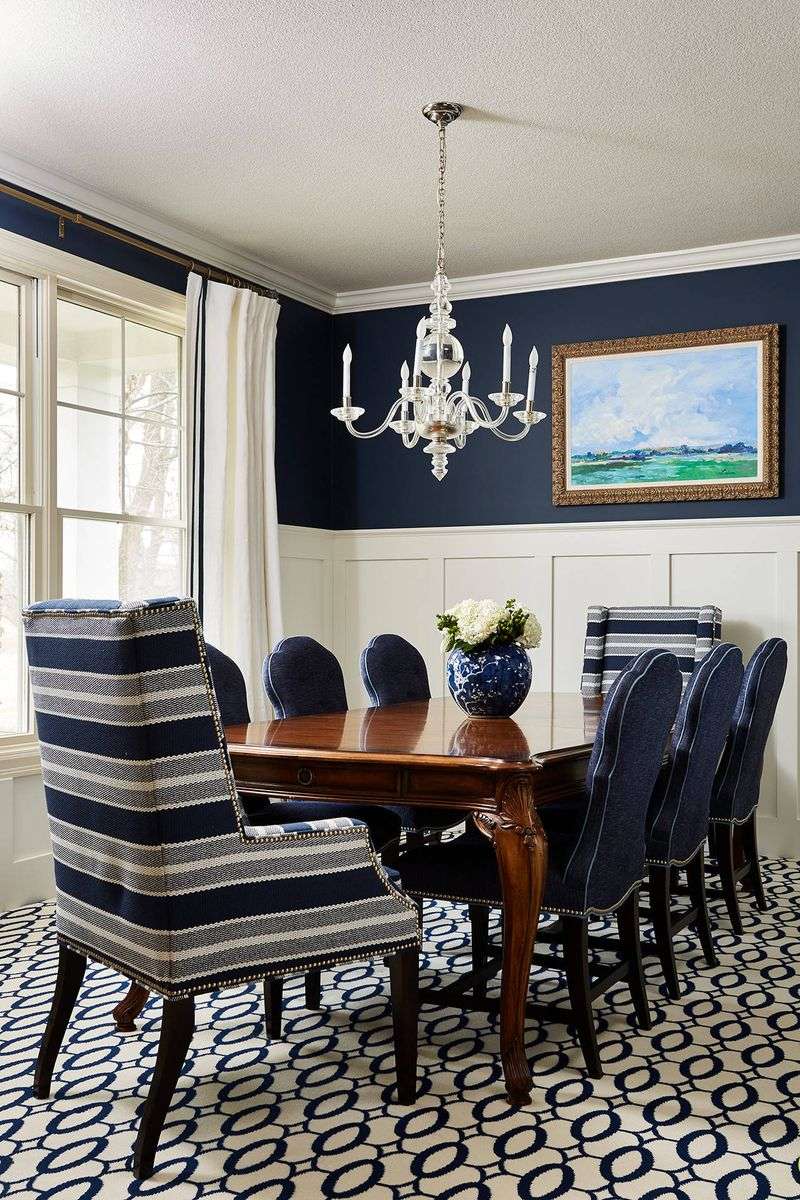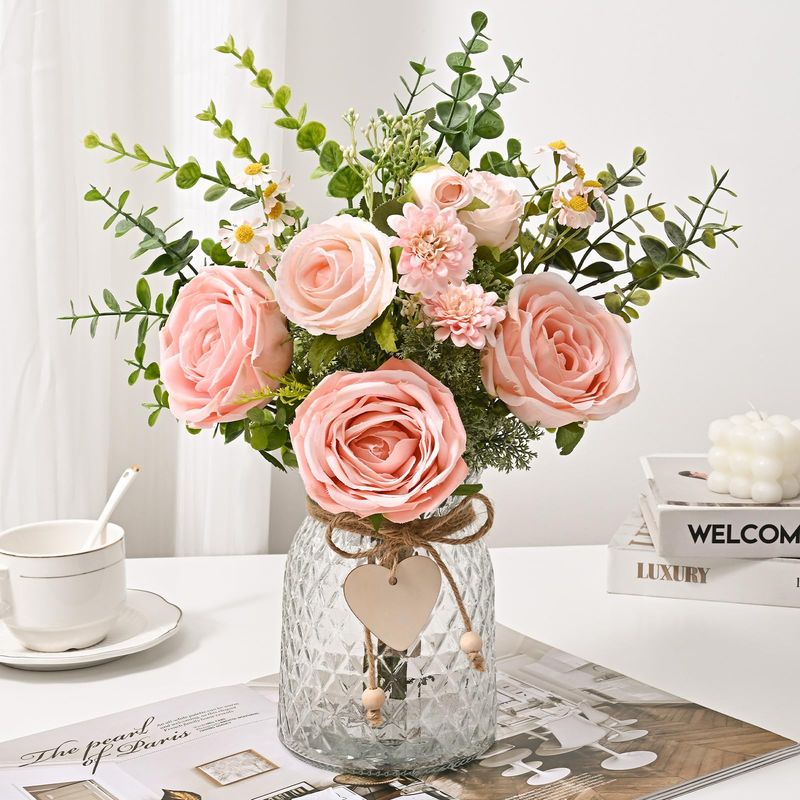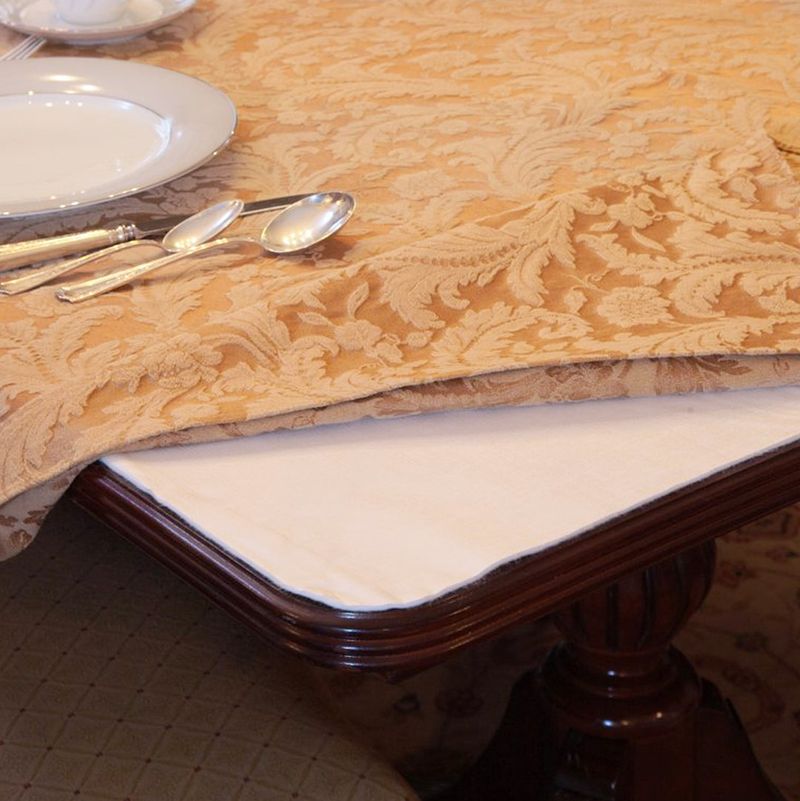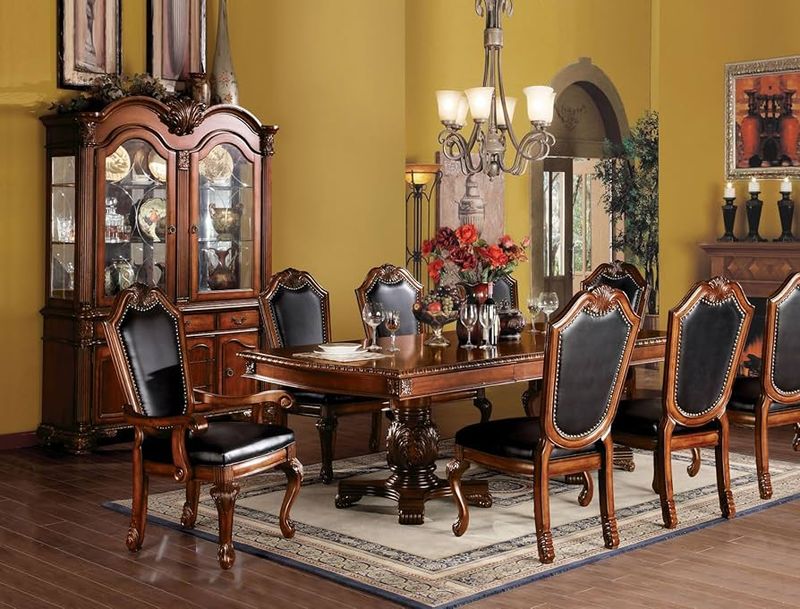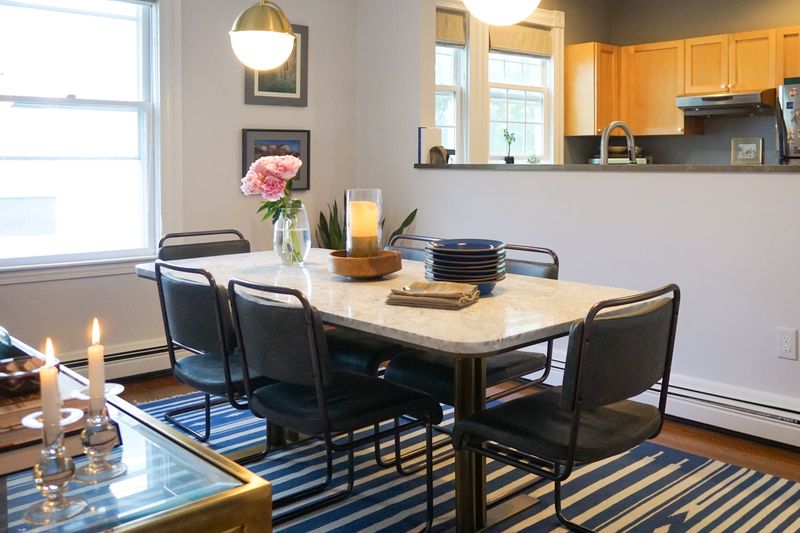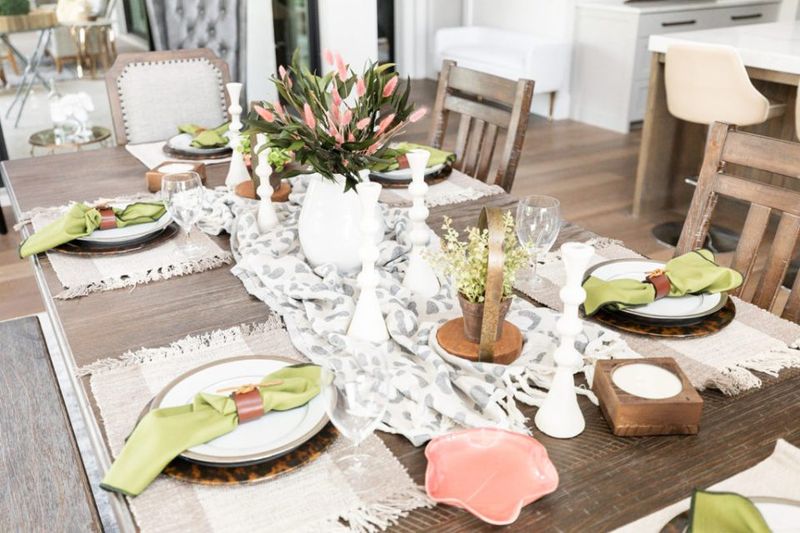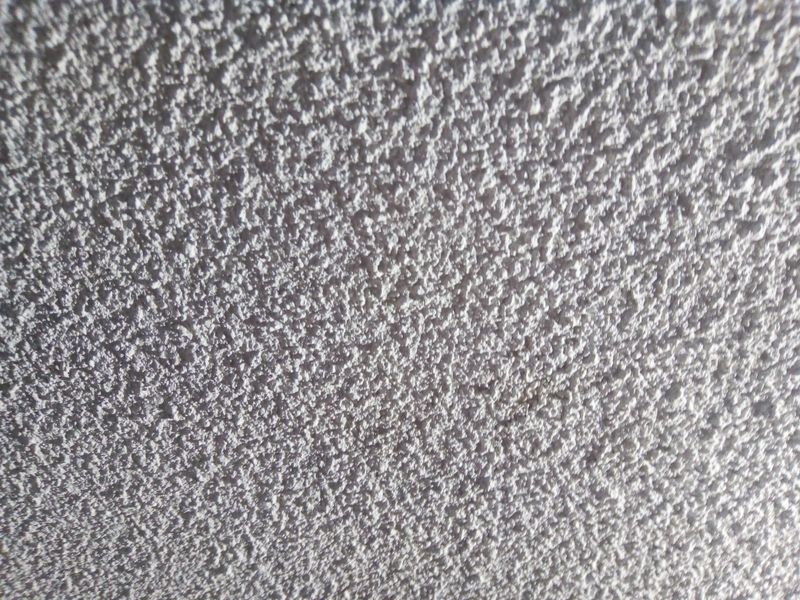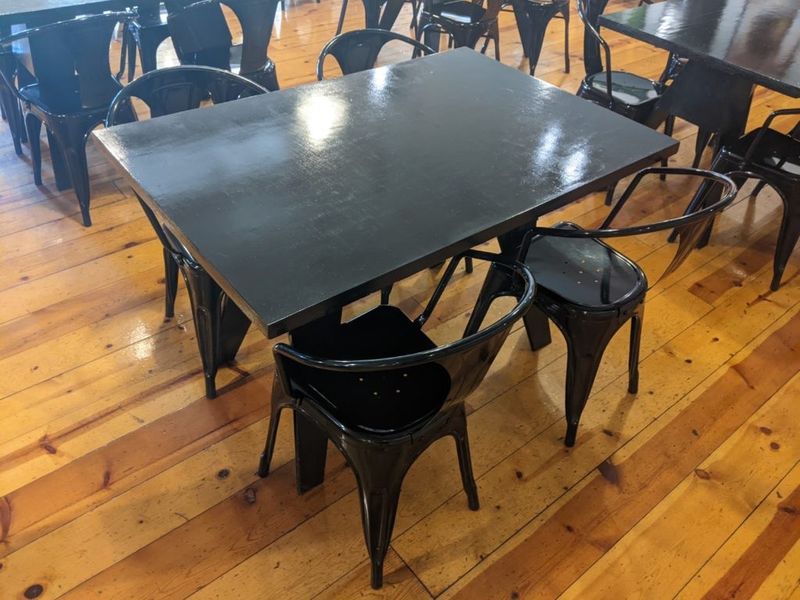When it comes to dining rooms, not all design choices are created equal. Professional designers often cringe at certain features that homeowners think look fabulous.
These decorating missteps can turn an otherwise lovely dining space into a visual disaster.
Let’s explore what top designers consistently flag as dining room don’ts that might be hiding in plain sight in your home.
1. Oversized Chandeliers
Bigger isn’t always better when it comes to dining room lighting. Those massive chandeliers that barely leave headroom for guests are a designer’s nightmare, not a luxury statement.
The ideal chandelier should be proportionate to your table size – typically about one-third the width of your dining table. When guests have to dodge crystal pendants just to see each other across the table, you’ve ventured into eyesore territory.
2. Plastic Table Covers
Nothing says “I’ve given up on style” quite like a plastic tablecloth permanently adorning your dining table. These transparent protectors might save your table from spills, but they’re killing your room’s aesthetic appeal.
Instead of plastic covers, designers suggest quality placemats, runners, or tablecloths for everyday protection. For special occasions, your beautiful table deserves to shine on its own or with proper table linens that enhance rather than hide its beauty.
3. Themed Dining Sets
Remember those matching dining sets with chair backs shaped like seashells or pineapples? What seemed charming in the showroom quickly becomes the focal point of design regret.
Heavily themed dining furniture locks you into a single aesthetic and often looks dated within a few years. Professional designers prefer timeless pieces that can evolve with changing tastes and decor styles without a complete overhaul of your dining space.
4. Cluttered China Cabinets
Your grandmother’s entire china collection, every souvenir mug, and those commemorative plates from the 80s don’t all need to be displayed simultaneously. Overstuffed china cabinets create visual noise that detracts from your dining experience.
Designers advocate for curated displays with negative space that allows special pieces to shine. Consider rotating your collections seasonally if you can’t bear to hide treasured items away.
5. Wall-to-Wall Carpeting
Food and wall-to-wall carpeting make for a disastrous combination that has designers shaking their heads. Between inevitable spills and the difficulty of sliding chairs in and out, this flooring choice creates both practical problems and visual disappointment.
Hardwood, tile, or even laminate flooring with a well-chosen area rug offers a more sophisticated look while providing practical benefits.
6. Artificial Plants and Flowers
Those dust-collecting silk arrangements might have seemed like a low-maintenance solution, but they’re fooling absolutely no one. Faded, dusty fake plants radiate neglect rather than the vibrant energy designers aim to create in dining spaces.
Fresh flowers, potted herbs, or quality preserved botanicals bring life to your dining area. If maintenance is a concern, consider low-care options like succulents or snake plants.
7. Bulky Dining Table Pads
While protecting your table is important, those thick foam pads covered in vinyl that permanently reside under your tablecloth are a designer’s pet peeve.
Modern table protection options include thinner felt-backed pads that can be stored away when not needed. For everyday use, quality placemats or runners provide protection without compromising your table’s profile or your room’s overall aesthetic.
8. Word Art and Signs
“Gather,” “Eat,” and “Blessed” – we know what happens in dining rooms without being told through mass-produced word art. These generic signs have become the ultimate design cliché that makes professional designers wince.
Instead of stating the obvious, designers suggest investing in original artwork that speaks to your personal taste. A thoughtfully chosen painting or photograph adds character without resorting to literal labels of what the space is for.
9. Matching Furniture Sets
Walking into what looks like a furniture showroom display – complete with the matching table, chairs, buffet, and china cabinet – lacks the personality that makes a dining room feel like home.
Designers recommend mixing complementary pieces that work together without being identical twins. This approach creates depth and interest while showcasing your personal style, making your dining space feel collected rather than ordered from a catalog.
10. Undersized Area Rugs
Tiny rugs that barely fit under the table create an optical illusion that designers find particularly jarring. When chairs pull out and catch on the rug’s edge, both function and aesthetics suffer.
The golden rule: your dining room rug should extend at least 24 inches beyond the table edge in all directions. This allows chairs to remain on the rug even when pulled out. A properly sized rug anchors your dining set while defining the space in a visually pleasing way.
11. Formal Place Settings When Not In Use
Keeping your table permanently set with your best china, crystal, and elaborate place settings when no one’s coming to dinner is a curious habit that designers flag as outdated. This museum-like approach to dining rooms makes the space feel untouchable rather than livable.
Modern dining rooms serve multiple functions in today’s homes. Designers suggest keeping tables either minimally styled for everyday use or set only when entertaining is imminent.
12. Vinyl Tablecloths
Florals and fruits frozen in vinyl might be practical, but they’re the antithesis of dining elegance. These wipe-clean coverings remind designers of outdated diners rather than inviting home dining spaces.
For everyday protection with style, consider cotton or linen tablecloths that can be laundered, or modern performance fabrics that resist stains while looking sophisticated. Even a bare table with quality placemats offers a more updated look than vinyl that crunches when your guests lean on it.
13. Popcorn Ceilings
Looking up should be a pleasure, not a textural nightmare. Those bumpy popcorn ceilings are perhaps the most universally despised feature among designers.
Beyond being dust collectors, these textured ceilings date your space instantly. Smooth ceilings create a cleaner visual line that complements rather than competes with your dining room décor.
14. Uncomfortable Dining Chairs
Those gorgeous but rock-hard chairs that have everyone shifting uncomfortably halfway through the meal prioritize form over function in the worst way. Designers note that no matter how stylish, chairs that discourage lingering ultimately fail at their primary purpose.
Quality dining chairs should invite guests to relax through meals and conversation. Look for appropriate seat depth, supportive backs, and cushioning that stands up to regular use.
15. Mirrored Accent Walls
Watching yourself chew from multiple angles isn’t anyone’s idea of a relaxing dining experience. If you’re looking to visually expand your dining space, designers suggest a single well-placed mirror or lighter wall colors instead.
These alternatives create a sense of openness without the discomfort of catching every unflattering eating moment in reflection.
16. Excessive Table Décor
When centerpieces become center-obstacles, you’ve crossed into eyesore territory. Towering floral arrangements, multiple candle holders, and collections of seasonal trinkets that make conversation impossible are practical disasters disguised as decoration.
Designers advocate for the “conversation test” – can guests easily see each other across the table? Tasteful centerpieces should enhance rather than hinder dining experiences.


